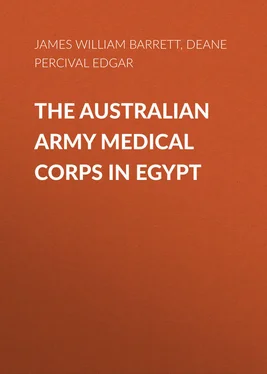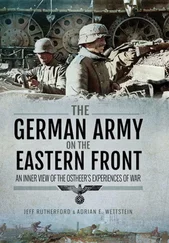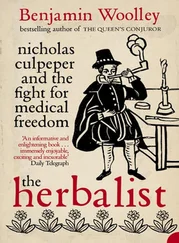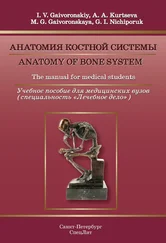Percival Deane - The Australian Army Medical Corps in Egypt
Здесь есть возможность читать онлайн «Percival Deane - The Australian Army Medical Corps in Egypt» — ознакомительный отрывок электронной книги совершенно бесплатно, а после прочтения отрывка купить полную версию. В некоторых случаях можно слушать аудио, скачать через торрент в формате fb2 и присутствует краткое содержание. ISBN: , Жанр: foreign_antique, foreign_prose, на английском языке. Описание произведения, (предисловие) а так же отзывы посетителей доступны на портале библиотеки ЛибКат.
- Название:The Australian Army Medical Corps in Egypt
- Автор:
- Жанр:
- Год:неизвестен
- ISBN:http://www.gutenberg.org/ebooks/41911
- Рейтинг книги:5 / 5. Голосов: 1
-
Избранное:Добавить в избранное
- Отзывы:
-
Ваша оценка:
- 100
- 1
- 2
- 3
- 4
- 5
The Australian Army Medical Corps in Egypt: краткое содержание, описание и аннотация
Предлагаем к чтению аннотацию, описание, краткое содержание или предисловие (зависит от того, что написал сам автор книги «The Australian Army Medical Corps in Egypt»). Если вы не нашли необходимую информацию о книге — напишите в комментариях, мы постараемся отыскать её.
The Australian Army Medical Corps in Egypt — читать онлайн ознакомительный отрывок
Ниже представлен текст книги, разбитый по страницам. Система сохранения места последней прочитанной страницы, позволяет с удобством читать онлайн бесплатно книгу «The Australian Army Medical Corps in Egypt», без необходимости каждый раз заново искать на чём Вы остановились. Поставьте закладку, и сможете в любой момент перейти на страницу, на которой закончили чтение.
Интервал:
Закладка:
James W. Barrett, Percival E. Deane
The Australian Army Medical Corps in Egypt / An Illustrated and Detailed Account of the Early Organisation and Work of the Australian Medical Units in Egypt in 1914-1915
INTRODUCTION
The experience of the Australian Army Medical Service, since the outbreak of war, is probably unique in history. The hospitals sent out by the Australian Government were suddenly transferred from a position of anticipated idleness to a scene of intense activity, were expanded in capacity to an unprecedented extent, and probably saved the position of the entire medical service in Egypt.
The disasters following the landing at Gallipoli are now well known, and the following pages will show how well the A.A.M.C. responded to the call then made upon it.
When the facts are fully known, its achievements will be regarded as amongst the most effective and successful on the part of the Commonwealth forces.
In the following pages we have set out the problems which faced the A.A.M.C. in Egypt, regarding both Red Cross and hospital management, the necessities which forced one 520-bed hospital to expand to a capacity of approximately 10,500 beds, and the manner in which the work was done.
The experience gained during this critical period enables us to indicate a policy the adoption of which will enable similar undertakings in future to be developed with less difficulty.
We desire to acknowledge gratefully the permission to publish documents granted by General Sir William Birdwood and Dr. Ruffer of Alexandria, and also much valuable help given by Mr. Howard D'Egville.
The beautiful photographs which are reproduced were mostly taken by Private Frank Tate, to whom our best thanks are due.
In any reference to the work of the Australian Army Medical Corps in Egypt it must never be forgotten that the expansion of No. 1 Australian General Hospital was effected under the personal direction of the officer commanding, Lieut. – Colonel Ramsay Smith, who was responsible for a development probably unequalled in the history of medicine.
The story told is the outcome of our personal experience and consequently relates largely to No. 1 Australian General Hospital, with which we were both connected.
CHAPTER I
THE AUSTRALIAN ARMY MEDICAL CORPS AT THE OUTBREAK OF WAR – THE CALL FOR HOSPITALS – APPEAL TO THE MEDICAL PROFESSION AND THE RESPONSE – RAISING THE UNITS.
Prior to the outbreak of war in August 1914, the Australian Army Medical Corps consisted of one whole-time medical officer, the Director-General of Medical Services, Surgeon-General Williams, C.B., a part-time principal medical officer in each of the six States (New South Wales, Victoria, and Queensland, South Australia, Western Australia, and Tasmania), and a number of regimental officers. With the exception of the Director-General, all the medical officers were engaged in civil practice, which absorbed the greater portion of their energy.
The system of compulsory military training which came into operation in 1911 was creating a new medical service, by the appointment of Area Medical Officers, whose functions were to render the necessary medical services in given areas, apart from camp work. These also were mostly men in civil practice, to whom the military service was a supplementary means of livelihood.
Camps were formed at periodical intervals for the training of the troops, the duration of the camps rarely exceeding a week. At these camps a certain number of regimental medical officers were in attendance, and were exercised in ambulance and field-dressing work.
In common with the members of other portions of the British Empire, few medical practitioners in Australia had regarded the prospect of war seriously, and in consequence the most active and influential members of the profession, with some notable exceptions, held aloof from army medical service.
In 1907, however, owing to the representations of Surgeon-General Williams, and to the obvious risk with which the Empire was threatened, senior members of the profession volunteered and joined the Army Medical Reserve, so that they would be available for service in time of war. The surgeons and physicians to the principal hospitals received the rank of Major in the reserve, and the assistant surgeons and assistant physicians the rank of Captain. Some attempt was made to give these officers instruction by the P.M.O's, but the response was not enthusiastic, and little came of it.
At the same time there were a number of medical officers in the Australian Army Medical Corps who possessed valuable experience of war, notably the Director-General, whose capacity for organisation evidenced in South Africa and elsewhere made for him a lasting reputation. The Principal Medical Officer for Victoria, Colonel Charles Ryan, had served with distinction in the war with Serbia in 1876, and in the war between Russia and Turkey in 1877. A fair number of the regimental officers had seen service in South Africa. The bulk of the medical practitioners concerned, however, had not only no knowledge of military duty, but certainly no conception whatever of military organisation and discipline; and what was still more serious, no real and adequate realisation of the extraordinary part that can be played in war by an efficient medical service by prophylaxis.
Such, then, was the position when war was declared.
The response from the people throughout Australia was, as Australians expected, practically unanimous. They determined to throw in their lot with Great Britain and do everything that was possible to aid. This determination found immediate expression in the decision of the Government of Mr. Joseph Cook, endorsed later by the Government of Mr. Fisher, to raise and equip a division of 18,000 men and send it to the front as fast as possible. The system of compulsory military service entails no obligation on the trainee to leave Australia, and in any event, the system having been introduced so late as 1911, the trainees were not available. The expedition consequently became a volunteer expedition from the outset. Volunteers were rapidly forthcoming, camps were established in the various States and training was actively begun.
Of the difficulty and delays consequent on the raising of such a force – of men mostly civilians, of all classes of society, without clothing, or with insufficient clothing and equipment of all kinds – little need be said. The difficulties were slowly overcome, and the force gradually became somewhat efficient. As both officers and men were learning their business together, the difficulties may well be imagined. In fairness, however, it should be said that from the physical and from the mental point of view the material was probably the finest that could be obtained.
We are, however, only concerned here with the medical aspect of the movement. The medical establishment was modelled on that of Great Britain, and consisted of regimental medical officers and of three field ambulances. The Director-General accompanied the expedition as Director of Medical Services, and Colonel Chas. Ryan, the Principal Medical Officer of the State of Victoria, accompanied the expedition as A.D.M.S. on the staff of General Bridges, the Commander of the Division. Colonel Fetherston took General Williams's place as Acting Director-General of Medical Services, and Colonel Cuscaden the place of Colonel Ryan as Principal Medical Officer of the State of Victoria.
The expedition left in October, a considerable delay having taken place owing to the necessity of finding suitable convoy, a number of German cruisers being still afloat and active. It reached Egypt without serious mishap in December, and at once encamped near the Pyramids at Mena.
Читать дальшеИнтервал:
Закладка:
Похожие книги на «The Australian Army Medical Corps in Egypt»
Представляем Вашему вниманию похожие книги на «The Australian Army Medical Corps in Egypt» списком для выбора. Мы отобрали схожую по названию и смыслу литературу в надежде предоставить читателям больше вариантов отыскать новые, интересные, ещё непрочитанные произведения.
Обсуждение, отзывы о книге «The Australian Army Medical Corps in Egypt» и просто собственные мнения читателей. Оставьте ваши комментарии, напишите, что Вы думаете о произведении, его смысле или главных героях. Укажите что конкретно понравилось, а что нет, и почему Вы так считаете.












